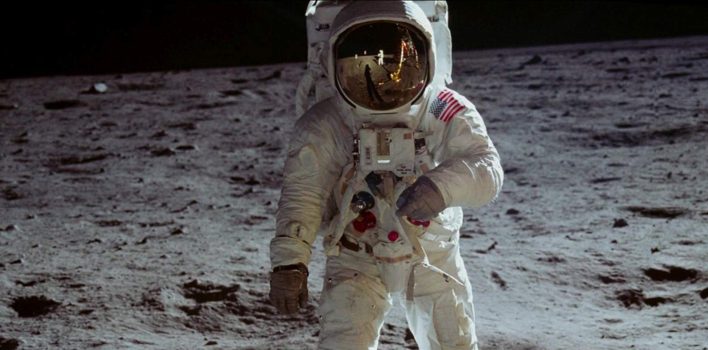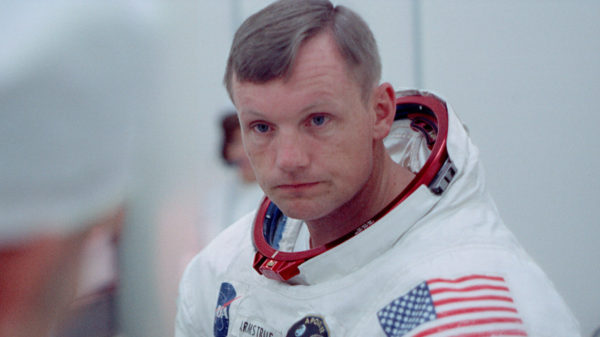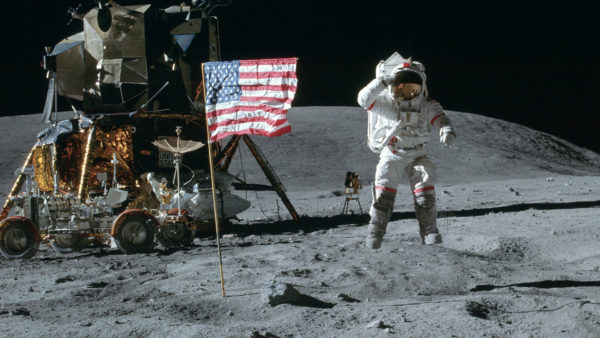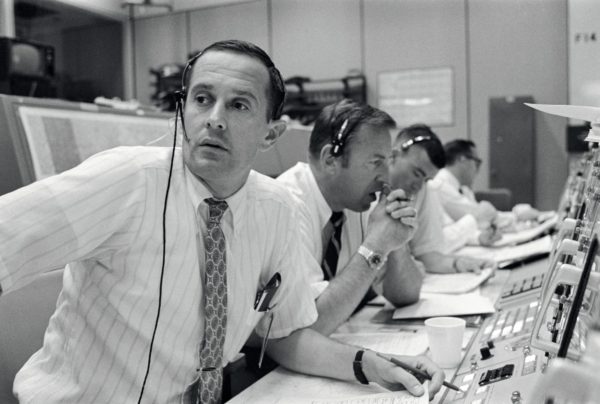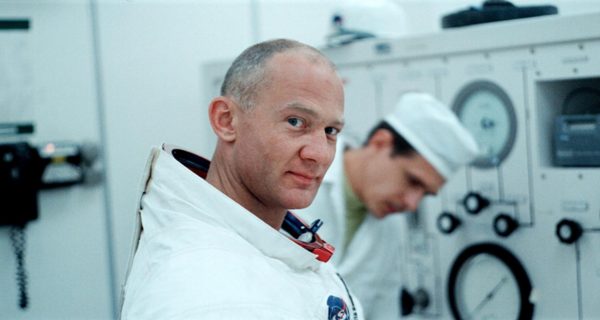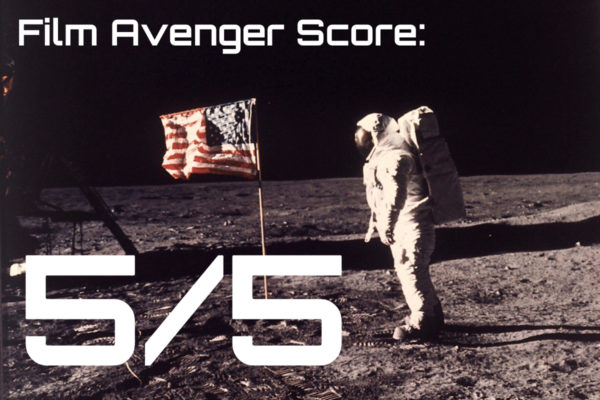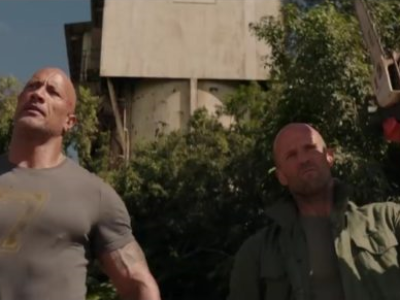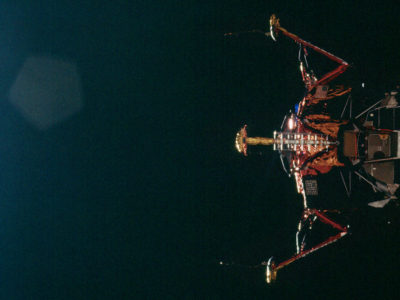Review| Apollo 11 – Miracle on the Moon
Few events defined the modern age quite like when Neil Armstrong set foot upon the moon and declared his one small step “one giant leap for mankind.” At that moment, the world was unified and celebrated a truly amazing human achievement. Americans in particular were extremely proud of their country and what the nation’s best and brightest minds were able to accomplish.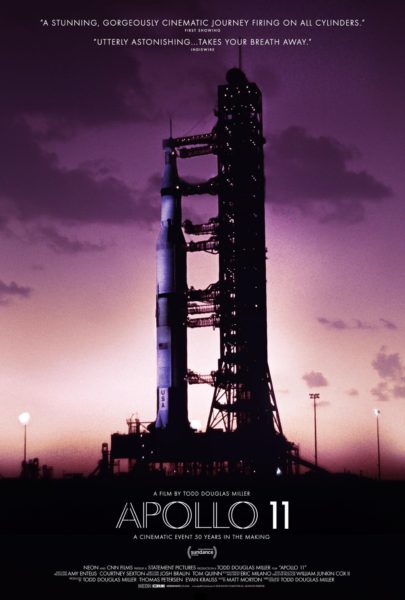
50 years later, the Apollo 11 mission still fascinates historians, scientists, and regular folks alike—be it the aforementioned brainpower that dreamed and designed the larger-than-life rockets and spaceships or the spirit of the American people and will of the nation’s leadership to shoot for the stars—literally. This spirit and fascination are perfectly captured in the new documentary Apollo 11.
This film was outstanding in almost every measure. Partially created from newfound 70mm footage of the titular mission, Apollo 11 soared with amazing visuals that captivated the viewer and filled them with a sense of excitement and emotion that probably mimics what all of America and the world felt during those few days in July of 1969.
Apollo 11 also reminded me of an axiom of human nature, and how our own perceptions affect our belief in the occurrence of real historical events.
The Good: A True Documentary
The care and precision given to the storytelling of Apollo 11 are remarkable in and of themselves. Editor, co-producer, and director Todd Douglas Miller and his team spent the better part of a year combing through hours of footage from NASA and the National Archives (including newly-uncovered 70mm footage of the Apollo 11 launch and recovery) and pieced together a narrative full of wonder and human emotion.
The footage brilliantly balances the awesomeness of the mission with the tenderness of the astronauts’ personal journeys—making Apollo 11 almost a biography. Using a “pure cinema” method, as he called it, Miller set up all the players as any filmmaker worth their salt would set up a character in a fictional story. The audience was introduced to each of the astronauts and visually given a basic overview of where they were in their lives at that moment in time. It was a mastery of the montage that few have achieved since Alfred Hitchcock.
This film and all its focus on the personal stories of the astronauts was a decidedly better look at the events of Apollo 11 than last year’s visually arresting (at times) but emotionally stunted First Man. In a fascinating bit of irony, this little documentary, using 50-year-old footage on a shoestring budget, told the story better and with more humanity than a multi-million-dollar blockbuster with state-of-the-art special effects. The wooden, mopey Millennial version of Neil Armstrong portrayed in that film doesn’t even compare to the affable, charming, humble man showcased in the footage of Apollo 11.
Apollo 11 was the first documentary I have seen in quite a while that lived up to its genre. Miller simply allowed the real narrative in the footage to play out without any outside influence. In one of its most astounding qualities, Apollo 11 had no traditional narration. Dialogue came from the comm chats, launch control, meetings, press conferences, and news reports at that time. This added a layer of authenticity to everything, as the events were presented without any modern commentary.
Adding to the authenticity was Apollo 11‘s simple but effective animation. These short interstitials gave the audience a “big picture” explanation of where they were at certain points in the mission. The animation was deliberately made to resemble the simple animations produced in 1969 for the press. Just another little detail I loved about this film.
The music, composed by Matt Morton, didn’t just provide some wonderful emotional underpinnings during key moments, it was also another layer of historicity: Morton created the score using only electronic instruments that were available back in 1969. This made the music another amazing element to the story. I love when filmmakers really get into their subject like that.
But the real star of this show was the beautifully restored footage. Every moment was seen with a crisp clarity unmatched until now. The viewer could now see all the components that made up these massive and complex machines. Todd Douglas Miller and his team did an amazing job matching footage to the aforementioned comm chats, syncing it so that it appeared to play out in real-time. The 70mm footage was particularly astonishing, with the launch sequence given an epic treatment worthy of a David Lean film. The added sound effects brought this historic moment to life and made one feel like they were actually there.
I was fortunate to see Apollo 11 during its run in a local IMAX theater (real IMAX, not AMC’s Lie-max), and I’m glad I did. This film was made for the IMAX format, especially the 70mm clips. Epic is indeed the word I would use to describe it. The screen overwhelmed me as an audience member and really brought the scale of the event home for me. The launchpad at Kennedy Space Center seemed to go on forever, punctuated by the sight of the Saturn V rocket piercing the sky. The IMAX sound system was relentless during the launch and I could feel the vibrations of the launching rocket in my seat and chest. Apollo 11 in IMAX was more than a film; it was an experience.
Note: Apollo 11 is being presented right now as a 45-minute version, subtitled First Steps, at IMAX theaters in museums across the country. If you have the chance to see it, even though it’s a truncated version, I would still recommend it.
The Bad: Not Much
There really isn’t anything significantly negative I can say about Apollo 11. If I had to really nitpick, it would be that the music sometimes overwhelmed the dialogue and made it difficult to understand. But that’s nothing huge.
I also wished the film was a little longer and went into more details about the journey to and from the moon as well as the astronauts’ welcome home. But I can forgive that as the film itself was so tightly constructed that anything added to it would have seemed superfluous.
Believing a Miracle
Five decades ago, a human being first set foot upon our planet’s nearest celestial body, and the universe became a little smaller in the process. Thousands of men and women helped get those three men to the moon with their collective genius and determination. But in those five decades, some people believe that the whole mission never happened.
Conspiracy theories about the moon landing have existed pretty much ever since the mission took place. In a recent poll, 7 percent of the American population still believe that the Apollo program was a hoax—a bit of propaganda to show up the Soviet Union, America’s Cold War foe at the time and chief rival in the space race. In fact, this conspiracy theory has become so prevalent that in the near future shown in Christopher Nolan’s 2014 film Interstellar, children are taught in school that the moon landings were faked.
One of the principal reasons why some people cannot believe that the moon landings happened is because of the primitive technology of the era (in their eyes). They cannot believe that scientists sent a man to the moon using only slide rules, blackboards, and computers that held a fraction of the processing power of today’s smartphones. It seems impossible.
And this isn’t just relegated to theories about the moon landing. People hold wild conspiracy theories about all kinds of historical events: 9/11, the assassination of President John F. Kennedy, the attack on Pearl Harbor, and the formation of the Great Pyramids, to name a few. But why do people have difficulty believing history, despite the overwhelming evidence that supports the true story?
One of my observances as a fervent consumer of history has been that the further that people are removed from historical events, the more difficult it is for people to believe they happened. The lives we live in the modern world of today are better than at any other time in human history. Therefore, there’s a twinge of arrogance that runs through us, thinking that previous generations were backward, unsophisticated rubes who couldn’t have accomplished anything of importance.
But the biggest reason I believe is that people have a hard time believing in miracles. And in a sense, Apollo 11 was a technological miracle. Everything, both in the spacecraft and on the ground, had to work perfectly and precisely in order for the mission to succeed. There were contingencies built on top of contingencies. Astronauts prepared for hours in simulators, going over every possible scenario. The greatest minds on earth put all their knowledge and resources into the project. And it all worked!
I can understand why one of Buzz Aldrin’s first acts after he and Neil Armstrong landed the Eagle on the Sea of Tranquility was to thank God for the moment and to honor Him by taking Holy Communion on the lunar surface. There was no way this mission could have happened as perfectly as it did without some help from the Almighty.
This denial of history and miracles can also be a factor as to why people have a hard time believing the events described in the Bible—particularly the resurrection of Jesus Christ. Despite eyewitness accounts, historical material backing up Jesus’ existence, as well as twelve disciples willing to go to the ends of the earth and into the jaws of death to spread Jesus’ message, people still have issues believing in His divine appointment.
There were even people in the time of Jesus who couldn’t believe what had happened and created wild conspiracy theories in order to discredit the miracle of the resurrection. The Pharisees, afraid of losing their power and control over the believing populace, spread the story that the disciples stole Jesus’ body.
Some non-believers and militant atheists might ask, “Why doesn’t God poke his head out of the sky and reveal Himself to the world?” There are a few reasons why He doesn’t reveal Himself in that manner, but the reason pertaining to this discussion is that, even if He did, there would be people who would still refuse to believe it and follow Him. It wouldn’t matter. A certain percentage of people want to follow their own way in life so much that even the sight of God wouldn’t cause them to fall down at His feet.
Sometimes, the evidence isn’t enough to satiate people’s wants to believe or not believe a story. It seems that, no matter what the evidence is being presented, a certain portion of people will never believe it. There comes a point when we have to have faith that what we’re being presented is the truth. It’s good to be skeptical and seek the truth, but skepticism for its own sake isn’t a way to live. I believe that that is one of the reasons why God uses faith to reach people. If people have faith in Him, He knows that their love is genuine.
The Last Word
Apollo 11 was one of the best documentaries I’ve seen in years. Truthful and unbiased, it simply captured the moment and the enormity of the titular mission using outstanding footage from the time —and, in turn, honored all the brave, bold, and brilliant people it took to accomplish that mission. This film is currently the one to beat as my favorite of the year.
People’s perceptions of historical events like the moon landing can be skewed the further from the event time progresses. It takes a lot for some people to believe that people in 1969 sent men to the moon using slide rules and primitive computers. The same can be said about the miracles of the Bible, including the resurrection. There will always be people to prefer the skeptic’s view. The question is at what point does the evidence for such events overwhelm the skepticism?


